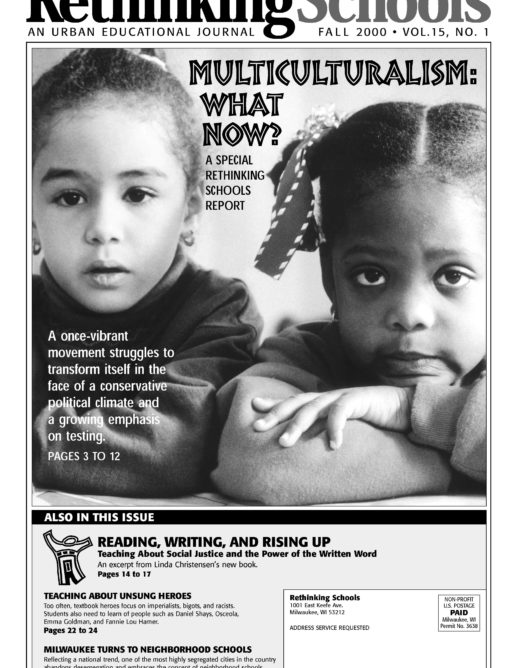Preview of Article:
Forward to the Past?
Issues of segregation, insufficient funding, and hurried decision-making envelop Milwaukee's proposal to return to neighborhood schools.
While avoiding white riots, Milwaukee’s public schools experiencedwhite flight. Tens of thousands of whites left Milwaukee PublicSchools (MPS), either to the overwhelmingly white suburbs or toprivate, mostly Catholic city schools. As a result, from 1978to 1999 the white student population in MPS shrank from 60% ofthe student body to 19%.
The decreasing number of whites in MPS fueled arguments that desegregationwasn’t really possible and that the amount of money spent on busing- nearly $60 million a year – was not money well spent in an erawhen school budgets are being squeezed. Many in the Black communityalso grew tired of bearing the burden of busing.
At the same time, Mayor John Norquist argued that desegregationwas a failed policy and, borrowing a phrase from the arch-segregationistsof the 1960s, called it “social engineering.” (Norquist has alsoembarked on an ambitious plan of revitalizing downtown by encouragingresidential development in the area. One catch: The middle-andupper-middle income white residents who are key to the plan werenot perceived as willing to attend MPS schools.)
Against this backdrop, city and school board powerbrokers convincedthe Wisconsin Legislature last year to pass the Neighborhood SchoolInitiative (NSI). The plan authorizes MPS to borrow up to $170million in state funds to reduce busing and create more room forstudents in overcrowded neighborhoods. The money saved from reducedbusing is to be used to pay off the debt.
The school board, which was required to present a plan to thelegislature by September 2000, decided in August to request only$98.4 million. The money can be used solely for capital expendituresand must be paid back with interest. It is assumed that the legislaturewill act on the school board’s plan so that implementation canbegin with the 2001-02 school year.</p

